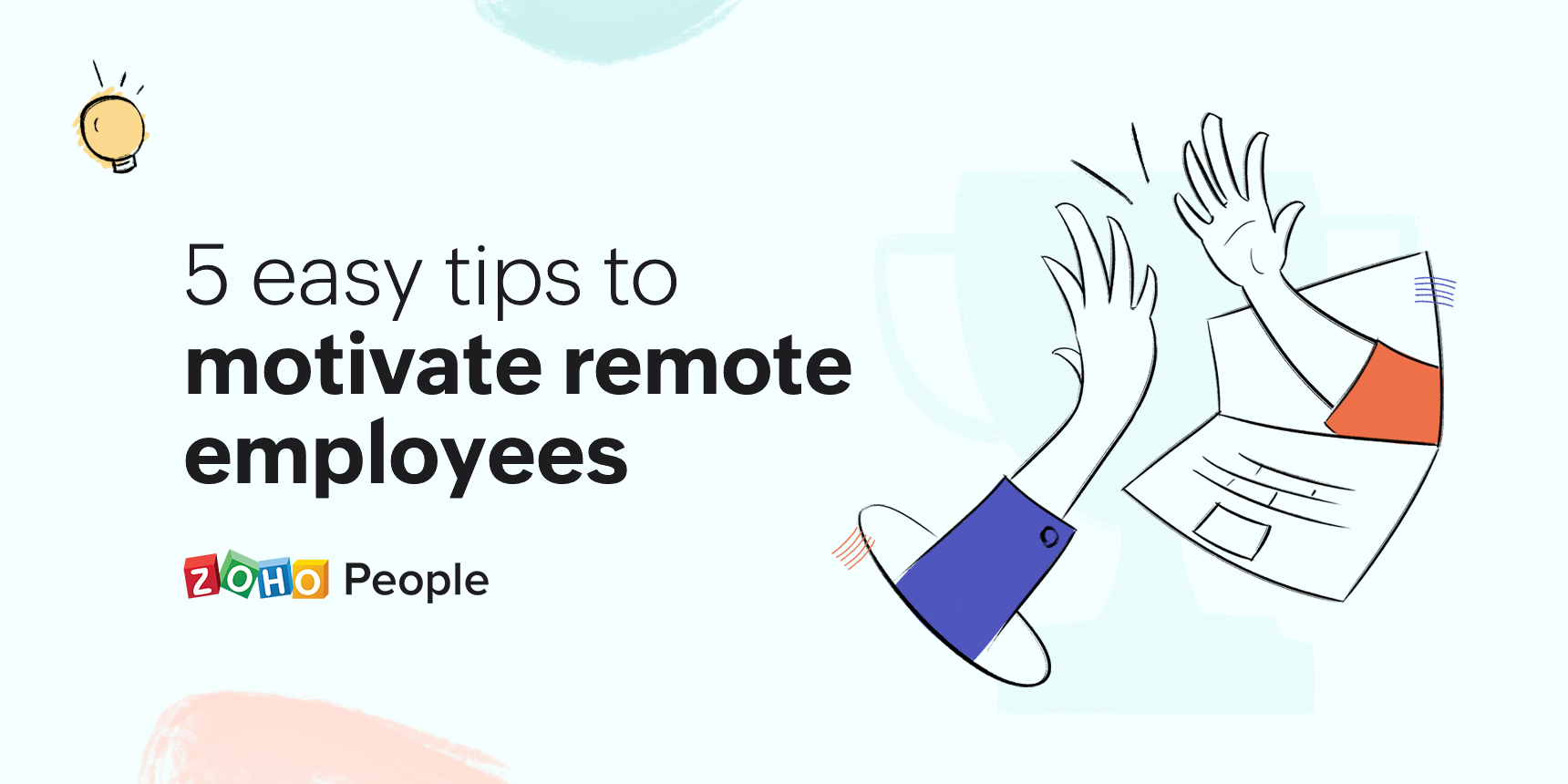- HOME
- HR insights
- 6 tips to improve remote leadership in 2021
6 tips to improve remote leadership in 2021
- Last Updated : August 23, 2023
- 951 Views
- 4 Min Read

Managing your newly remote teams, especially through these stressful times, can be challenging. Your employees may have a hard time adjusting to the changing work conditions, so it's best to try to optimize your organization's leadership strategies to help employees thrive in any situation they are placed in. Otherwise, your employees may lose the zest for their work overtime and become less efficient at their role. Happier employees mean better growth and success for your organization. By making small changes to your employee management style, you can easily overcome the obstacles that are getting between you and a successful remote work environment for your entire workforce. Here are some tips to help you get started:
Adopt asynchronous communication
Using asynchronous communication means that everybody doesn't have to be online at exactly the same time every day. It supports flexibility and a healthy work-life balance by offering other ways for employees and teams to collaborate while working remotely. This communication can be done when it's most convenient for them, so employees don't have to compromise on their other responsibilities. Some of the basic forms of asynchronous communication include sending emails, voice notes, text messages, forum posts, video recordings, and more. You can also regularize asynchronous communication a bit and ensure employees reply by a certain deadline. If there's a really important meeting that everybody has to be online for, fix a time and communicate it to your employees well in advance.
Also see: Tips to improve internal communication at your organization
Prioritize your people
During these hard times, it's necessary that you put your employees first and provide the support that they need. When you take care of your employees, they'll take care of your organization. Trust them to manage their roles and give up micromanagement. Offer mental health support options to help employees overcome the fear, anxiety, and isolation that has been caused by the pandemic. Identify employees who overwork and help them avoid burnout by setting clear expectations. If possible, conduct virtual wellness activities like yoga and meditation in between work activities to help your employees relax and breathe easier.
Focus on L&D
Building a culture of remote learning and development helps employees adapt to changing business needs and the new roles and responsibilities that come with it. Otherwise, your employees will have a hard time protecting your business from disruptions as changes occur. Organize learning programs to improve the digital competencies of your employees. Additionally, work closely with each department head to understand each team's skills gaps and personalize the training for each team. With times being as they are, it may be a good idea to promote resilience training that helps employees to overcome the challenges caused by the pandemic and look for opportunities to grow further.
Improve transparency
Fostering transparency is the key to improving remote employee management. Your employees may feel disconnected from your organization as they are working from different locations. With a more transparent culture, employees can be included in every decision, stay updated on important business information, and receive appreciation openly for their hard work. This goes a long way to fostering more engagement and motivation despite the long distances between some employees. One way to promote a transparent work culture is to establish a social intranet and encourage managers to use the platform to brainstorm and make decisions together with their team. Top-level leaders can use the platform to make employees aware of their business conditions and how their performance has added value to organizational growth. Conducting regular town hall sessions where employees can ask questions and have their concerns addressed by upper management will also help to keep everyone connected.
Motivate your employees
The increased isolation and lack of candid face-to-face interactions can demotivate your employees and make work feel tedious. The quality of the work they do may also start depleting slowly. That's why it's necessary to introduce better strategies to keep employees motivated. This could be as simple as recognizing the work they've done and providing feedback to help them improve. Listen to their concerns and, whenever possible, take some kind of measures to address them. Make sure to assign a variety of tasks to employees to make work more interesting. Encourage your managers to break down team silos by keeping everybody in the organization on the same page. This will create a sense of purpose among your employees because they'll better understand the business-level goals they are striving for.
If you are planning to implement long-term remote work, it's necessary to shift your management practices and help employees get accustomed to the new working conditions. We hope these tips gave you some insight on how to lead your remote workforce efficiently!
 Tarika
TarikaContent Specialist at Zoho People


